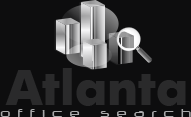What Does “Plug and Play” Mean?
A “Plug and Play” space is an office that includes furniture, and wiring. It is very important for you to define with the landlord upfront about what items will be included because some landlords may leave some items out of the lease.
What are the Differences Between Class A, B and C Buildings?
Class A, the highest and usually the most expensive type of building, is typically a newer building with high end finishes in the common areas and typically have the more on-site amenities (large lobbies, building security, numerous elevators, gym, etc) than Class B and C properties. Class B buildings are similar to class A but may be missing some of the same features, making them one step down from Class A. Class C buildings have the lowest rents and are much more dated and not as well maintained as Class A or Class B buildings.
What are the Most Common Types of Rent?
The three most common types of rent for office space are Triple Net (NNN), Modified Gross (MG) and Full Service (FS). Triple Net (NNN) is the least inclusive as the Tenant will be responsible for all occupancy costs (utilities, real estate taxes, insurance, utilities, common areas, etc). Make sure you are aware of EVERY additional fee before executing a final lease. Modified Gross rent will most likely include the tenant’s pro rata percentage of operating expenses, but will not include utility and janitorial costs. Full Service is the most inclusive rent and will include many of the expenses that your company would normally pay. Full Service is typically offered to tenants in most Class A and B buildings.
What is a Base Year?
Your operating expenses are determined by the base year. For example, if your company has a Full Service lease for 2014, then your fee for operating expenses is fixed for all of 2014. Most leases, though, will charge the tenant for increases in operating expenses over the base year. So – if the operating expenses rose $0.25 in 2015, the Landlord would most likely pass that $0.25 on to you, the Tenant.
Rentable Square Footage vs. Usable Square Footage:
Rentable square footage is the square footage for which you pay rent. It includes your office square footage as well as the Common Area square footage. Usable Square footage is the actual square footage within your space and does not include the common areas. The difference between the two is called the Load Factor which can vary widely and have a significant impact on your total occupancy cost.
What is a Load Factor?
A load factor is the percentage of the building that is part of the Common Area. Landlords will use this percentage to determine the pro rata share for the Common Areas for each tenant.
What is a Common Area and Who is Responsible For it?
Common Areas are areas in a multi-tenant building that are used by all of the tenants. These areas can include the lobby, elevators, restrooms and any other area that is an amenity to the Tenant. All of the tenants in the building are financially responsible for the Common Areas and pay rent on them although the landlord maintains these areas.
Will my Company be Charged for After Hours Use of Heating and Air Conditioning?
Charges can differ depending on the building, but many of the buildings will charge you on an hourly basis. This is common for after-hours heating and air conditioning. If after hours HVAC is important to your company, one option is to ask your real estate broker to focus on those properties offering separately metered suites.
What is the Commencement/Termination Date of the Lease?
Make sure you read through your contract thoroughly and are clear on the starting and ending date of your lease. These two dates should be clearly highlighted in the contract.
What Happens if My Company Wants to Stay in Our Office Space After the Lease Expires?
If you know that you will be staying in the same space ahead of time, then make sure to have an agreement with your landlord that states those facts. Without this agreement, the landlord will implement a “Holdover Clause” that will detail the scenario if you stay past your termination date. Often times this includes a pre-determined, punitive rent.
Can my Company Leave for a New Office Space After We Have Signed the Lease Agreement?
Most likely not. A Lease Agreement is a legally binding contract that requires your company to pay rent for the space for the full term of the lease.
What is the difference between a lease and a sublease?
A lease is a real estate contract between a landlord and a tenant that governs the tenant’s use of the landlord’s facility, including the term, rental, and rules of use. A sublease is a real estate contract between a tenant and another tenant who leases a space from them. The terms of the original landlord/tenant lease remains in force and governs the terms of the sublease.



Recent Comments